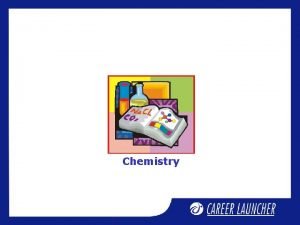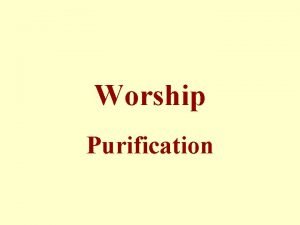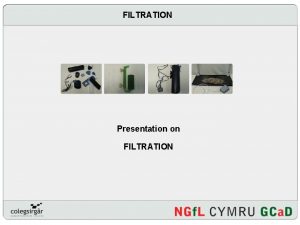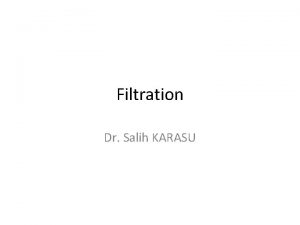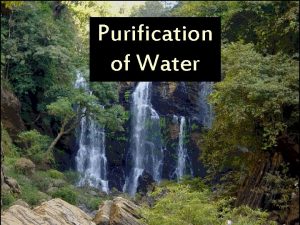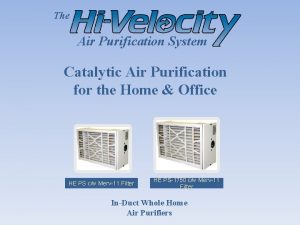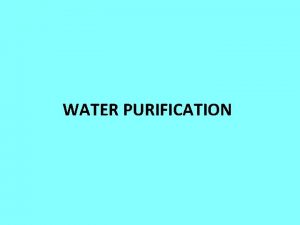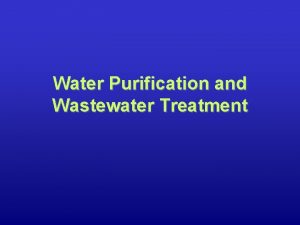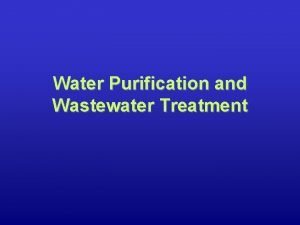Purification of solid compounds Filtration Filtration is a









- Slides: 9

Purification of solid compounds (Filtration)

Filtration is a technique used either to: 1)Removing solid impurities from liquid 2) Separate reaction product from reaction mixture or from solvent which be crystalized from it There are two types of filtration process: 1)Gravity filtration 2) Vacuum filtration or filtration under reduced pressure

Gravity filtration: This method depends on pouring solution in filter paper and it penetrates pores of filter paper to flask by action of gravity but solid compound still exist on filter paper gravity filtration procedure:

To perform a standard gravity filtration, first select the size of filter paper that, when folded, will be a few millimeters below the rim of your stemmed funnel. Fold the paper into a cone by first folding it in half, and then in half again, as shown. Next, support the glass funnel in a ring or place it in the neck of an Erlenmeyer flask. Wet the filter paper with a few milliliters of the solvent to be used in the following procedure. Wetting the paper holds it in place against the glass funnel. Pour the mixture to be filtered through the funnel, in portions if necessary.

Notes: 1) It is better to use funnel with small and wide end to avoid precipitation of compound on the inside of funnel during filtration of hot solution 2) Fluted filter paper (multi-fold cone filter) is often better for gravity filtration with organic solvents as there will be a large surface area through which solvent passing and also allow passage of air inside and outside flask preventing the increase of pressure inside flask so it accelerates filtration. A diagram of how to fold fluted filter paper is shown below.

Vacuum filtration : This technique depends on reducing pressure inside flask by using pump suction to discharge air. Vacuum filtration uses a Buchner funnel and a side-arm flask. Vacuum filtration is faster than gravity filtration, because the solvent or solution and air is forced through the filter paper by the application of reduced pressure.


To perform a vacuum filtration clamp the flask securely to a ring stand Add a Buchner funnel with a rubber funnel adaptor then Obtain a piece of filter paper in the funnel that is small enough to remain flat but large enough to cover all of the holes in the filter. If necessary, you can cut a larger piece of filter paper down to size. Then Place the paper in the funnel

Connect the side arm flask to a vacuum source. Always use thick-walled tubing Wet the paper with a small amount of the solvent to be used in the filtration. This causes the paper to adhere to the plate and keeps materials from passing under the paper during filtration. Turn on the vacuum source. Pour the mixture to be filtered onto the filter paper. The vacuum should rapidly pull the liquid through the funnel.
 Purification and characterization of organic compounds
Purification and characterization of organic compounds Specific resistance formula
Specific resistance formula Ionic, covalent and metallic bonds venn diagram
Ionic, covalent and metallic bonds venn diagram Used for heating of stable solid compounds and elements
Used for heating of stable solid compounds and elements Example of crystalline solid
Example of crystalline solid When a solid completely penetrates another solid
When a solid completely penetrates another solid Chem
Chem Crystal solid and amorphous solid
Crystal solid and amorphous solid When a solid completely penetrates another solid
When a solid completely penetrates another solid Sample of solution
Sample of solution
